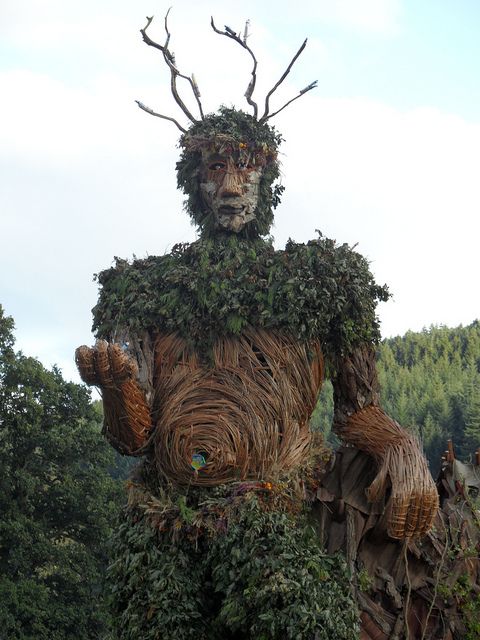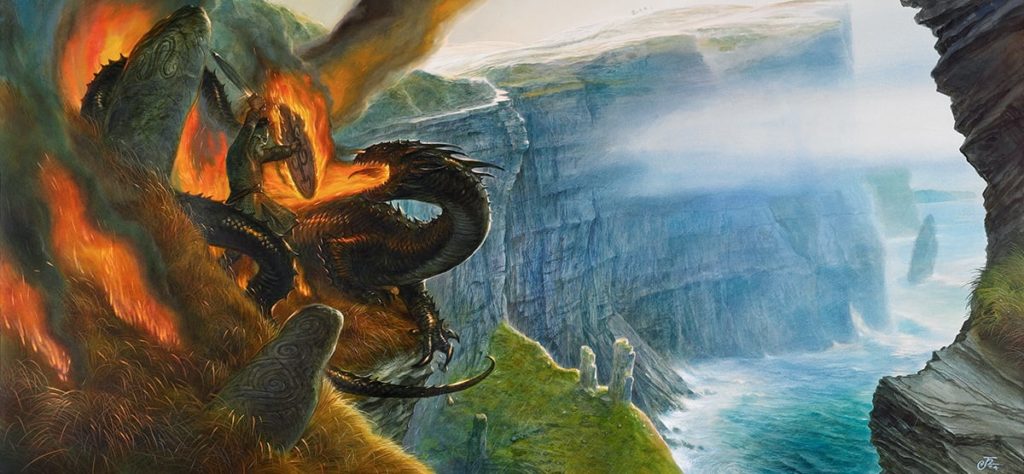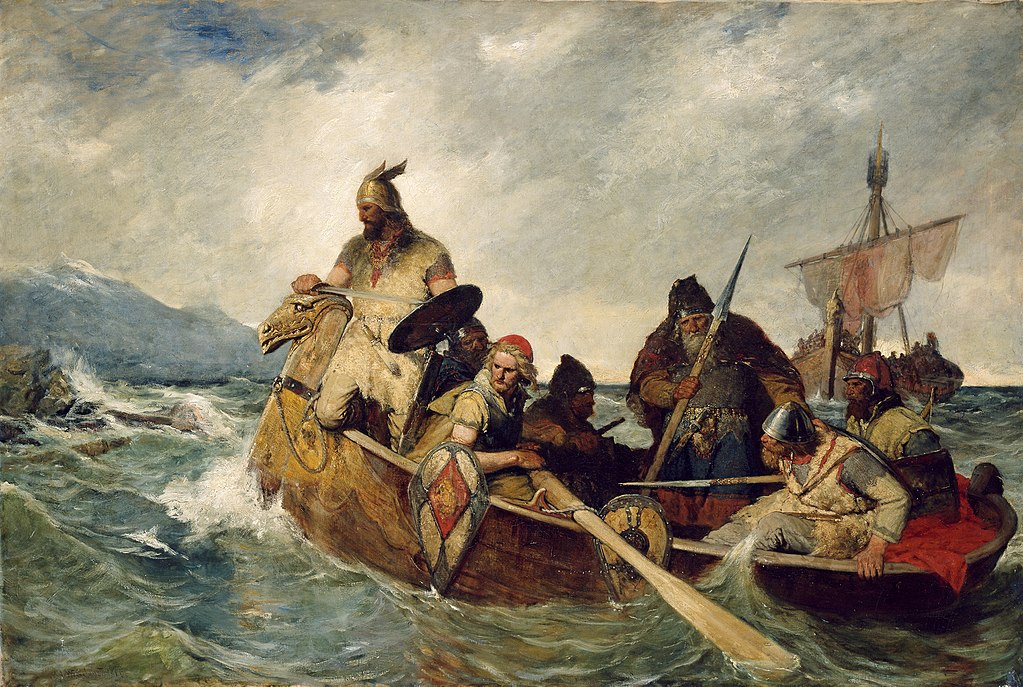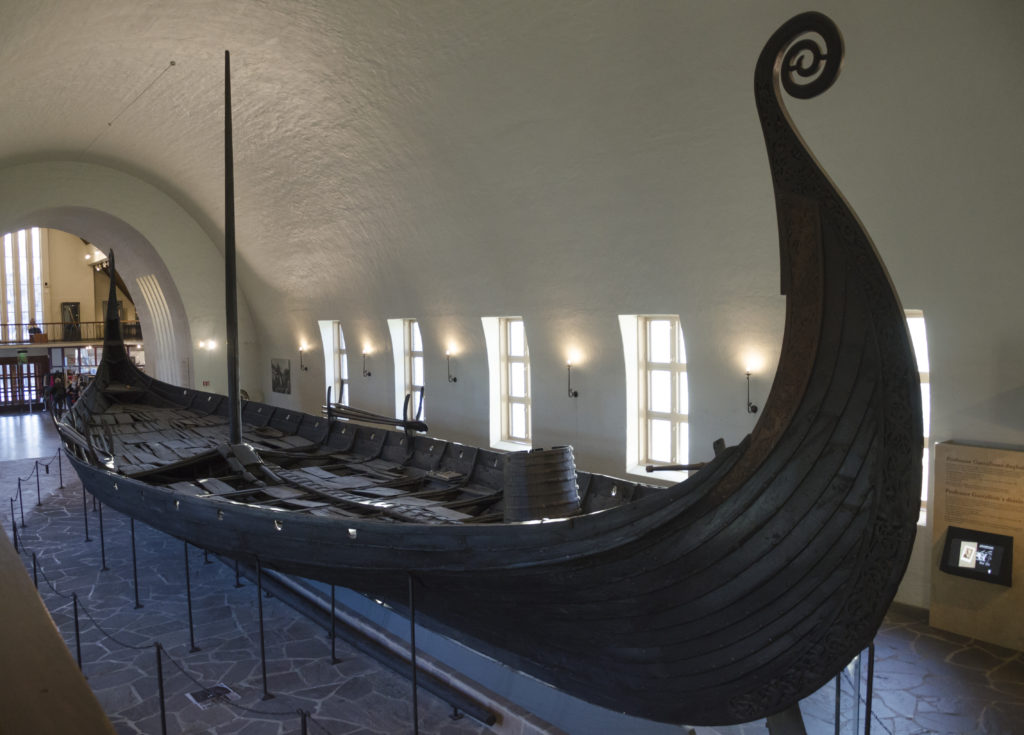In August 2021, Dr Janina Ramirez spoke with CulturAll editor Alex Matchett. In this first of three interview pieces she describes her own fascination with the Early Medieval Era…
Is the Dark Ages a fair description of the Early Middle Ages?
The idea of a ‘dark age’ is rooted in the origins of ‘medieval’ as well. Fox, the 16th Century antiquarian, comes up with this idea of a classical period, then a modern period – the Renaissance onwards – and he needed to call the bit in the middle something; hence ‘The Middle Ages’.
The concept of ‘Dark Ages’ is more specific, tending to be the idea that Rome starts to collapse, the peripheries gain their independence and the core is attacked. Then, of course, it’s the Barbarians and the Vandals. All these terms we see as derogatory because they were illiterate; their cultures aren’t worthy of study and all the lights go out and everything stops.
There is a drop in literary output but that’s because they’re not writing things down because they’re not the bureaucrats and the administrators that the Romans were but there is still such vibrancy of culture. I see it, if anything, as a liberation of regional variation because the Roman Empire sucked identity out of regions and imposed Roman ‘fabrics’, if you like, upon those cultures. As Rome is pulled back we see idigenous styles and cultures that are probably better suited to the landscape than Rome was. We see the flowering of metal work and the whole concept of ‘art’ becomes so different: Art in a Classical sense is public, it’s big, it’s grand, it’s permanent, it’s part of civilization, civitas and cities – solid places.
Once you have mobile people, during the migration period, art takes on a very different meaning: it’s personal, it’s private, it’s portable – that is beautiful in it’s own right. These are the things, that to this day, we use to define ourselves.
So no more ‘Dark Age’! We don’t need to be the inheritors of the classical tradition anymore, we can start to ask different questions of the past and find different people in it and I think it is richer as a result.
So what term should we use?
I use Early Medieval or Late Antiquity.

Is there any return to pre-Roman cultures in Britain?
I don’t really think they ever went away. Rome was a superstructure over an existing British culture and we can see it all the way through – for example in the Green Man motif and all the imaginary in the romanesque objects like the Gloucester candlestick, so many of the knots, spirals, these are indigenous motifs. These are things that tie back to the land, to tradition.
And with this we then see the incoming of Germanic influence, with the Anglo Saxons, who also have an animistic approach to the world: the landscape is spirited, it is alive, when you see these cultures combining it produces something very beautiful, something that is far less homocentric than Roman art and tradition. It is not about humans and their figures, their Gods don’t look like us. There is much more imagination, a fantastical, nature-centred world view.
How does the oral tradition play a part with that? Does that replace the written tradition and does that lead into the sagas and storytelling?
Yes, it is essential. I do not like to use the word illiterate, because in our modern age we use the term to equate ignorance. But the reality of expert studies on oral societies is they are using up to five times more of their memory in order to retain all of their literature. If anything, non-literate societies are thinking harder and utilising that skill. I would say that oral transmission of stories within non-literate societies is utterly essential. They are not seeing just a bit of storytelling around a fireplace. It is literally the way they hand down everything – all knowledge. And so it’s powerful, it’s important, and the sagas do emerge from that.
The strand of the histories and oral histories that people pass down is just one of many. I’m fascinated about how oral societies transmit everything. I mean how else would you know who not to marry because they could be your cousin? Someone in the community has to know that!
The oral tradition is a powerful part of these societies and something we definitely see in the Celtic regions. I constantly have to remind people that the Romans didn’t get to Ireland and that makes an awful lot of sense about what is going on in Ireland through this time and how this then comes back and influences the British isles more generally. Likewise, they didn’t get to Scandinavia and how that then comes down and influences the British isles. So we are constantly being re-acquainted with a pre Roman world view.

Without the kind of Roman bureaucrats and administrators you mentioned, does history and its narrative become more ‘creative’?
I like to say so. There is absolutely more license for interpretation in oral history. I mean, I am equally happy analysing historical texts as I am objects, but I think the problem is, when something is written down, we don’t necessarily scrutinise it with the same objectivity. If we read an article today and it is making some claims, we would go off and fact check it and we would be able to know if it is true. We don’t have that luxury, looking back a thousand more years.
So, if a source survives, it will often be taken on face value and it won’t be scrutinised at that same level. And also the people who are writing in this period, they haven’t got the internet, they haven’t got access to tons of research material, they are having to elaborate, they all bring their own personal agendas, their own views to the things they write. So I do like reading texts, but I always read them with a critical eye.
Objects and artefacts absolutely come with that caveat – that’s built in. I almost always use the words ‘perhaps’ and ‘maybe’ when I am making an interpretation because I am not living at the times these things were made. I still try to because they are true witnesses of the past, they were there and that’s why I love the stories and the world these objects can reveal to us if we listen to them. If we take time with them. So yes, I think it is ‘creative’ but not to the point of being of less value than textual evidence. They both come with consents, and I think it allows us to create a truly populated world with these objects and the people that held them.
The sagas and storytelling are crucial to Anglo Saxon and Norse art – is there one story/source more than any other which begins this tradition?
No there isn’t. I’ve been writing a book about goddesses and it is fascinating. Some of these goddesses take you back thousands and thousands of years and in researching them it really gave me an insight into how much we’ve lost of our oral tradition. You might find a fragment, a tiny piece of stone or clay and it is going to reference something that everybody already knows about. The sagas have that same power of reference: the stories that we end up with in the British isles, they have legacies that go back hundreds and hundreds of years.
I love the sagas because there is nothing like them. When you look at what was being written in Europe at the same time, in literary terms, the sagas are a revolution because everyone is reading romance, everybody is working with rhetorical devices, everybody is working within the Christian tradition. You get the sagas and they are like James Joyce or Virgina Woolf, they are just this madly dramatic, immediate – almost stream of consciousness – literature that takes you to the place, to the person, it puts you in the middle of the story and the drama: who slept with who, and who is angry and going to kill them as a result…
It is the most amazing literature, and that is unique. I think that the reason why the Icelandic ones are so unique is because of that coming together of culture and people. Genetic studies of the Icelandic population, a contained population up to this day, has shown that their origins begin with Scandinavian men and Irish women. That is the unique coming together that creates the Scandinavian sagas and it is what makes them unlike any other literature.

Could you explain for context, these Irish female population? Were they captured and taken by men looking for land to resettle?
Yes, it’s one of the dark sides of the viking ages that we don’t get told enough about. The people who were moved were not necessarily always enslaved but slavery would have been an aspect of it. There are individuals that we know about like Unn (Aud) the Deep-Minded, who is one of the early settlers and who wasn’t enslaved. She was a free woman from the Scottish isles, who chose to relocate because of threats to her family. She took a ship herself, she put all of her family and all her property onto this ship and set out to find somewhere new to live. And I think that is an inspiring story of a woman leader, but is also a story of migration, of resettlement.
Was there really a sword called ‘Leg Biter’?
Swords are named all the time, and for all sorts of reasons. They are the highest status object that you can purchase, they are made in this alchemical tradition. Wayland the Smith is the God of the smithing process – and how magical it must have seemed! You take a solid ore, you heat it up to a thousand degrees in a furnace and it becomes liquid and then it becomes a solid form… there is something deeply magical about that process.
The latest research seems to be suggesting that later Viking burials, like the Oseberg ship, for example, are opened up within about hundred or two hundred years from the initial burial and then bits of bones are taken from it.
Why is this happening? There is a reconstruction archaeologist working in Norway at the moment who says that human bones were used in this smelting process, to create the carbon to solidify these swords – and they knew, when they were putting the human bones in, that they were putting the bones of the ancestors into the blade.

This was to make it stronger? Both literally because of the carbon but also they found that by doing this the sword was actually stronger so they believed that magic of it?
Exactly. It is still very early experimental archeology, it is still being researched but I find that knowing the way they write their legends, knowing the way they relate to graves, burials, and ancestor worship, I think it is entirely convincing that could be the case.
And then, when you are naming your sword it is a person, it’s got personality. They were all named! You’ve got “Leg biter”, “Foot biter”, you’ve got one called “Bart the Bastards”, there was another called “The Bastard”… You would understand why they would name it. You would name your horse, you name the things that are the most precious to you and the swords are precious.
So yes, naming the swords is not just a poetic device. The thing I love about oral poetry is that it is more like rap than it is anything else, it is rhythmic and it follows an alliterative pattern: you have to have letters that repeat in each line, and so the oral poet is constantly trying to come up with the next word that they have to fit into the alliterative line that has the same letter. And their solution was kennings.
So if you haven’t got a word that means ship but you are trying to alliterate on the letter “m” you have to come up with something, so you might think of ‘master of waves’, and that is how kennings developed to serve this process. The naming of weapons comes into that because they become heros characters in their own stories.
So the naming is not a novelty, it is not a mistranslation?
No, it is very common. We do know these things were deeply personal. It actually ties into the new series of Lost Relic Hunters, when we were looking into the helmet and the sword, we can see that these things really mattered to their owners, these are the most precious things they own. And they will have stories to tell us that will be imbued with personality from their owners.


